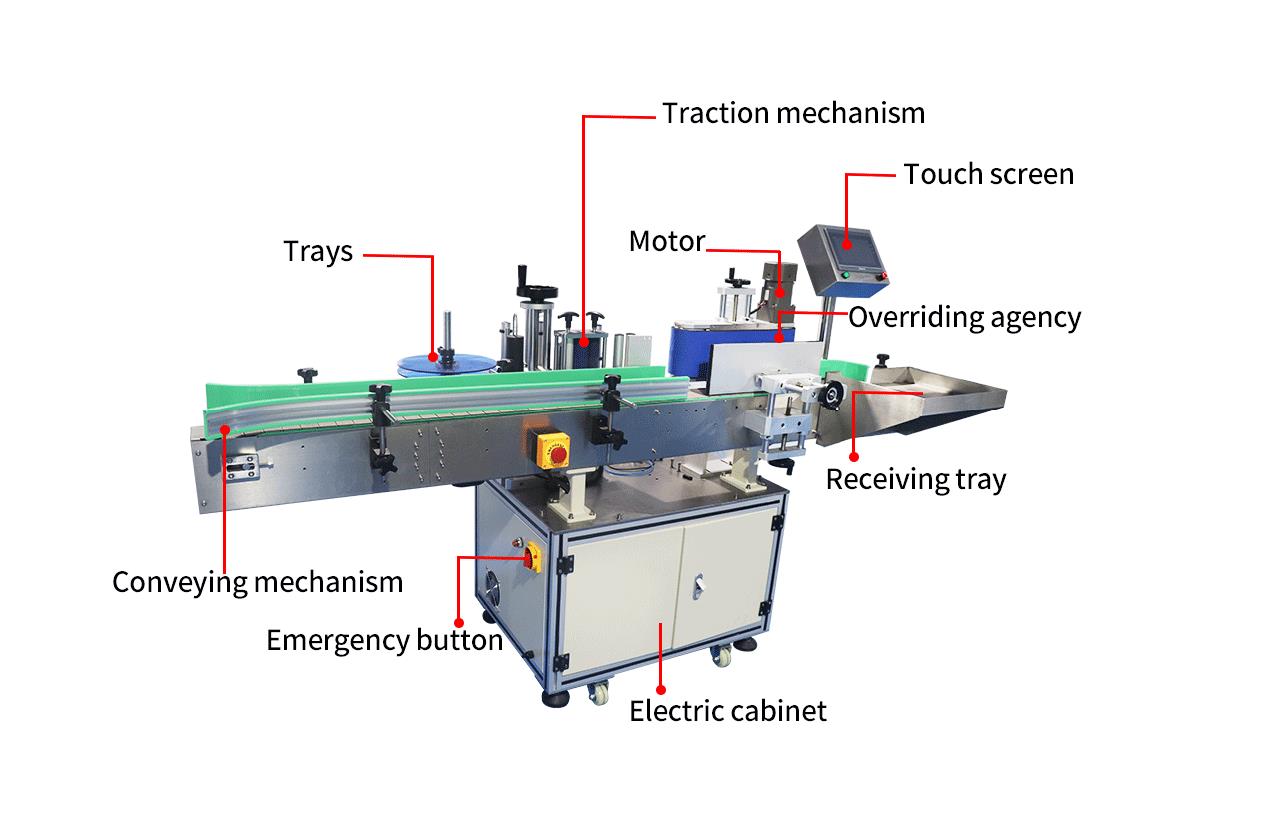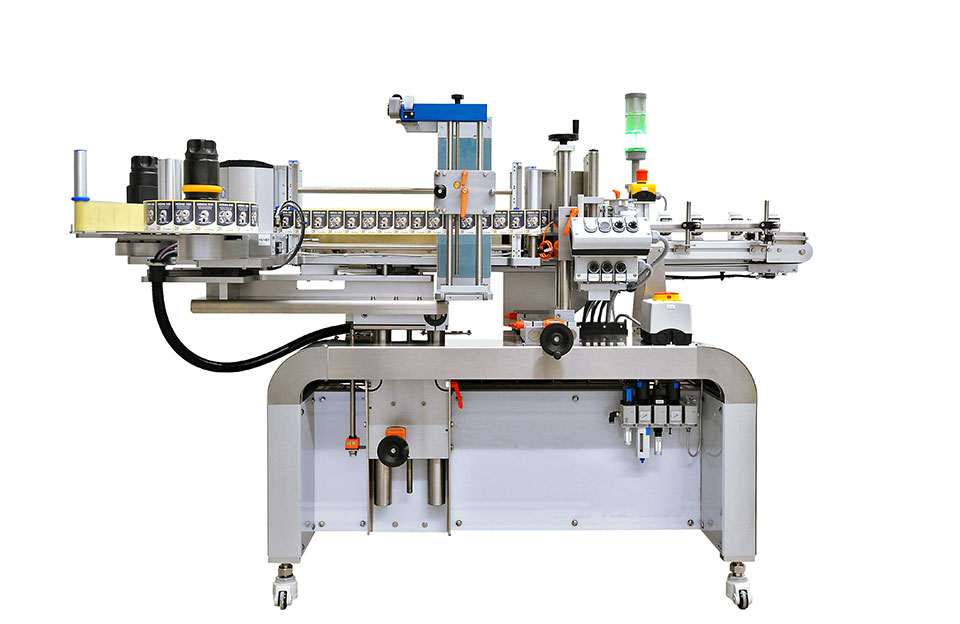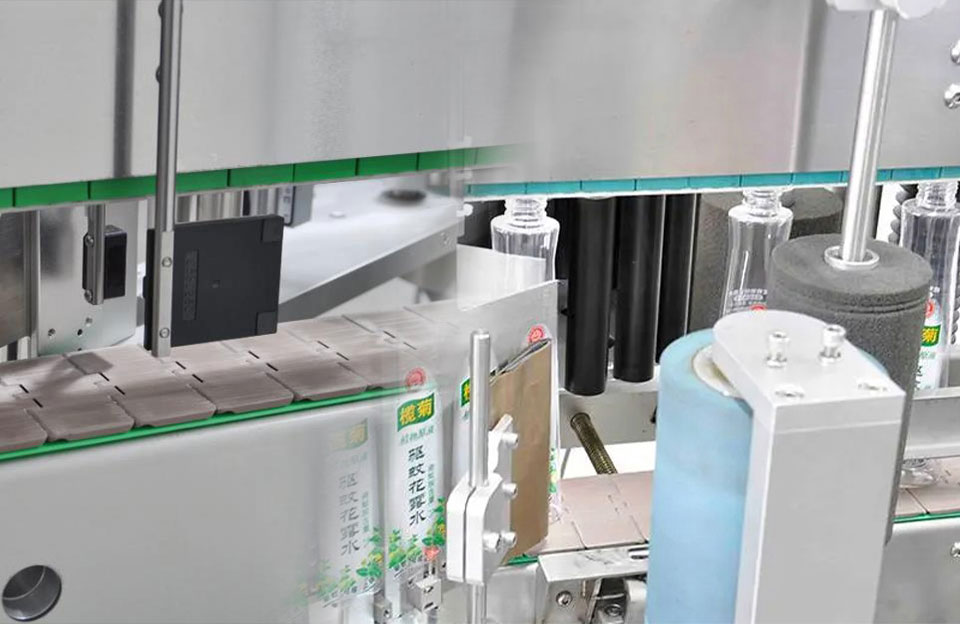Components are a machine’s fundamental building blocks, and each component plays a specific role, contributing to the machine’s overall functionality, efficiency, and reliability. Understanding the importance of these components is crucial for designing, operating, and maintaining machines effectively.
The key components of labeling machines work in synchronization to automate the labeling process efficiently, improving productivity and accuracy in various manufacturing and packaging applications. The complexity and features of labeling machines can vary depending on the specific requirements of the industry and the type of labeling needed.
Key Components of Labeling Machines
Labeling machines are sophisticated industrial devices designed to efficiently apply labels onto products or packaging in various industries. Key components of labeling machines work together to ensure precise and consistent label application. Here are the key components of labeling machines:
- Label Dispenser: The label dispenser is one of the key components of labeling machines which holds the roll of labels and feeds them into the labeling system. It ensures a steady supply of labels for application onto the products.
- Labeling Head/Applicator: The labeling head or applicator is one of the most important key components of labeling machines responsible for applying labels onto the products. It dispenses the label precisely onto the designated area of the product or packaging using various techniques like pressure-sensitive adhesion, glue application, or heat transfer.
- Product Conveyor: The product conveyor is a conveyor system that moves the products through the labeling machine. It ensures a continuous flow of items, aligns them correctly, and presents them to the labeling head for accurate application.
- Sensor System: The sensor system is one of the key components of labeling machines which identify and verify the presence of products on the conveyor. These sensors trigger labeling when a product is in the appropriate position, ensuring labels are applied accurately.
- Control Panel and HMI: The control panel, often featuring a Human-Machine Interface (HMI), allows operators to interact with the labeling machine. Operators can set up parameters, adjust label positions, monitor production, and troubleshoot issues through the HMI.
- Label Roll Holder: The label roll holder is a structure that holds the label roll securely in place during the labeling process. It ensures the roll feeds smoothly into the dispenser without any jams or misalignments.
- Label Unwinder (Optional): A label unwinder may be included in some machines, especially those handling larger label rolls. This component helps manage the tension and alignment of the label roll during dispensing.
- Label Gap or Notch Sensor (Optional): Some labeling machines have additional sensors designed to detect gaps or notches between labels on the roll. This feature ensures precise label dispensing and reduces the risk of double labeling.
- Label Rewinder (Optional): In machines handling linerless labels or when a label backing needs to be removed, a label rewinder may collect the waste material in a neat roll.
- Frame and Structure: The frame of the labeling machine provides a sturdy structure that holds all the components in place and ensures the machine’s stability during operation.
- Power Supply and Electrical Components: The labeling machine requires a power supply to operate, and it contains various electrical components like motors, controllers, and sensors for seamless functionality.

Key Components of Labeling Machines
The Working Process of Labeling Machines
The working process of a labeling machine involves key components of labeling machines working together to accurately and efficiently apply labels onto products or packaging. Here is the fundamental working process of labeling machine:
- Label Roll Loading: The labeling machine operator loads a roll of labels into the label dispenser or unwinder. The roll contains a continuous supply of labels that will be used for the labeling process.
- Product Placement on Conveyor: The products or packages needing labels are placed on the conveyor system. The conveyor ensures a smooth and continuous flow of products through the labeling machine.
- Product Sensing: As each product moves along the conveyor, sensors detect its presence and position. These sensors trigger labeling when a product is in the correct position.
- Label Dispensing: When a product is in the labeling position, the label dispenser or applicator dispenses a label from the roll. The label is precisely positioned to align with the designated area on the product, ready for application.
- Label Application: The labeling head or applicator applies the label onto the product accurately and securely. Depending on the type of label and adhesive used, this can be done through pressure-sensitive adhesion, hot melt glue, or other application methods.
- Label Roll Advancement: After each label is applied, the label roll advances, ready to dispense the next label for the next product. This process ensures that a new label is always available for application.
- Product Discharge: Once the label is applied, the labeled product continues to move along the conveyor until it reaches the end of the labeling process. It is discharged from the labeling machine, and the next product is placed on the conveyor.
- Label Waste Management (Optional): In machines handling linerless labels or when a label backing needs to be removed, a label rewinder may collect the waste material in a neat roll. It is an optional part of key components of labeling machines.
- Control and Monitoring: Throughout the process, the labeling machine’s control system, often accessed through a Human-Machine Interface(HMI), oversees the entire operation. The operator can monitor the labeling process, adjust settings, and troubleshoot issues through the control panel.
Conclusion
The cooperation of the key components of labeling machines can ensure that each product is labeled with the correct label in the correct position. The automation provided by labeling machines significantly increases labeling efficiency, reduces manual labor, and improves the overall quality and consistency of labeled products.


